WINTER
Also see Seasons index.asp?pageid=734365
Thoughts of winter tend to be dark. Stark bare trees. Cold. Short days. But they can be extremely picturesque.
Winter is celebrated, albeit indirectly, by Halloween and Guy Fawkes as the days get shorter and the nights longer and colder. And then Christmas followed by New Years Day.
The Royal Museums at Greenwich desribe the winter solitice :
The winter solstice marks the shortest day and longest night, though not the latest sunrise or earliest sunset (due to the discrepancy between 'solar time' and our clocks). So from here on in, days will be getting longer and hours of darkness decreasing.
Under the old Julian Calendar, the winter solstice occurred on 25 December. With the introduction of the Gregorian calendar the solstice slipped to the 21st, but the Christian celebration of Jesus’s birth continued to be held on 25 December. This date is also associated with the Roman festivals of ‘Dies Natalis Solis Invicti’ (the birthday of the unconquered sun) and Saturnalia (in honour of the god Saturn), as well as Nordic pagan festivals.
In astronomical terms, at the solstices the Sun is at its furthest from the celestial equator (the projection of the Earth’s equator onto the sky). ‘Solstice’ comes from a Latin word meaning ‘Sun stands still’, because the apparent north-south movement of the Sun in the sky stops before reversing direction. At the winter solstice, the apparent position of the Sun reaches its most southerly point against the celestial background. Some see the solstice as marking winter’s start, others its central point.
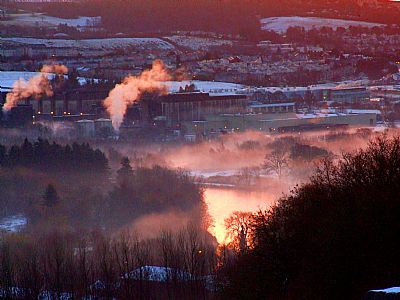
Rising plumes of condensation, steam fog, over the Leven on a cold morning mingle with those of the Strathleven Industrial Estate.
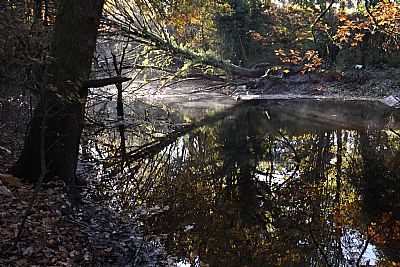
The gloomy edge of winter. One almost expects to find aligators here. This is the lade as it passes through Fishers Wood. Some leaves remain golden above, but most have fallen down and have gone dark. A light steam fog rises from the black water.
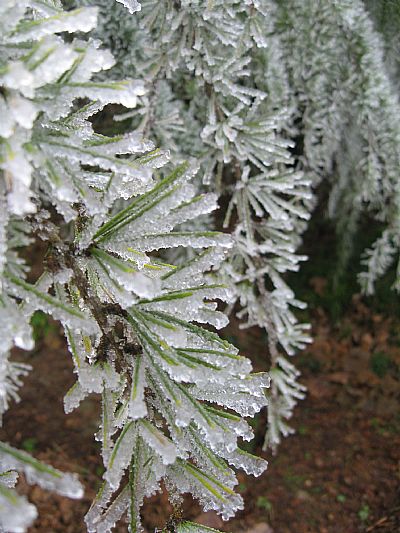
Freezing fog on leaves
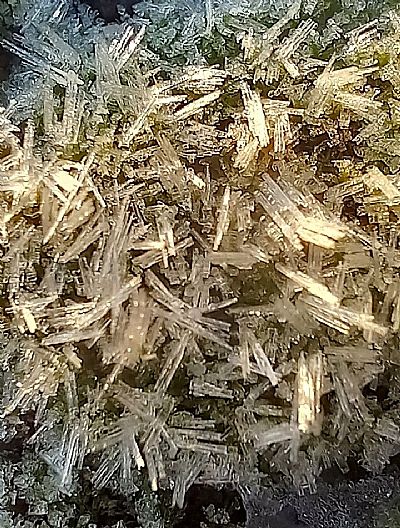
The formation of ice crystals is fascinating. Here are some on moss growing on a stone wall in January.
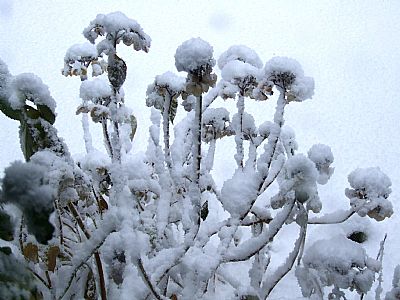
and flower seed heads form beautiful shaes.
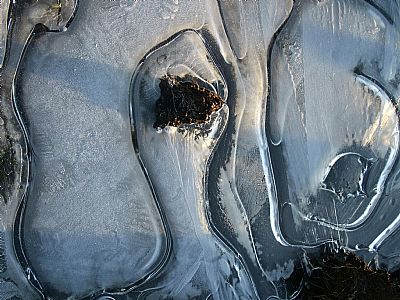
As the water under iced puddles recedes, the ice cracks and forms beutiful patterns.
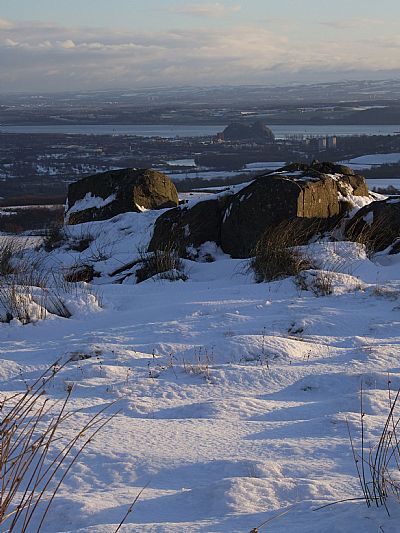
Dumbarton Rock from the Carman hillfort.
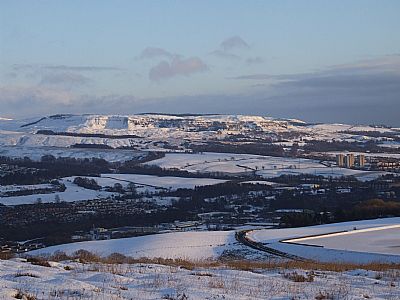
Lancraigs from Carman Muir
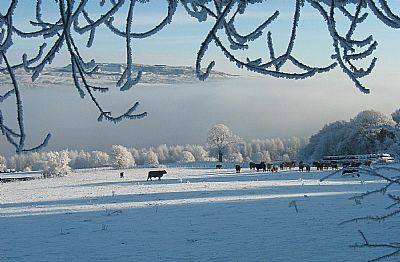
A farm scene on Carman hillside.
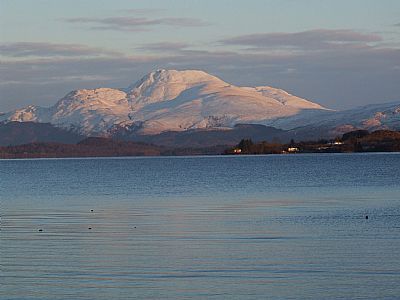
Ben Lomond from Duck Bay.
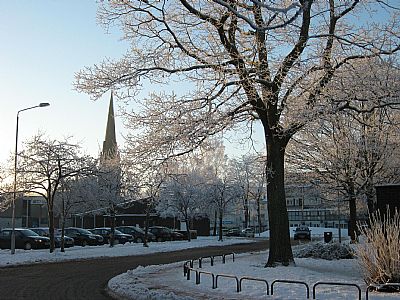
Risk Street looking back towards the Bell Centre spire.
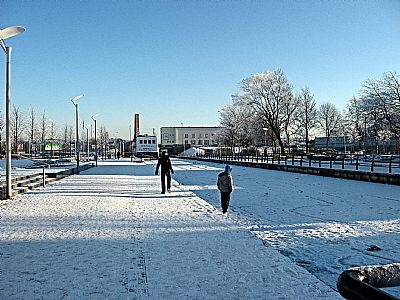
The Forth and Clyde Canal as it passes by the shopping centre in Clydebank. Youngster dare each other to walk across the ice. Judging from the number of foopriints, many have passed up and down. But this is a very foolish pastime. Through the course of a day, the ice can change in thickness and strength. The canl water may not be very deep, but if you fall through, you can suffer cramps, severe frost bite and cuts from the broken ice.
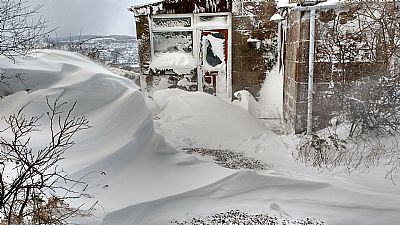
Do you remember the Beast from the East of 2018? This is the back door of a house overlookig Renton. And we did not even get the worst of it.
We usually get signs of spring through February. Snowdrops in bloom. New greenery. Some bright and even mild sunny days. But then some years it is not at all like that. Will global warming mean the end of severe winter conditions earlier and earlier? Or will be still be caught out sometimes?
What we called the Beast from the East was only a few years ago in 2018. Let's look at it in detail. Wiki tells us:
Anticyclone Hartmut (dubbed the Beast from the East (Irish: An Torathar ón Oirthear) was a storm that began on 22 February 2018, and brought a cold wave to Great Britain and Ireland. Anticyclone Hartmut also brought widespread unusually low temperatures and heavy snowfall to large areas.The cold wave combined with Storm Emma, part of the 2017–18 European windstorm season, which made landfall in southwest England and the south of Ireland on 2 March.
In contrast to usual winter storms, Hartmut was not formed as a normal low pressure area along the jetstream. The initial event was an Arctic outbreak caused by a disordered polar vortex into Central Europe, transporting not only cold air from Siberia to Europe but also - due to the lake effect - sending heavy snowfall into Great Britain and Ireland.
This weather situation repeated itself on the weekend of 17 and 18 March, but was less severe than on the previous occasion, due to the onset of spring. This briefer cold snap was given the name "Mini Beast from the East".
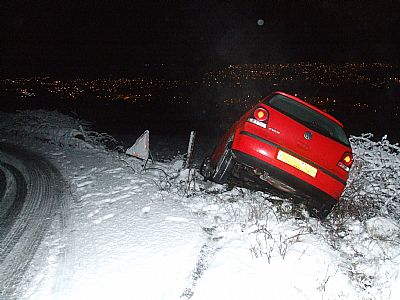
Frost is not always evident on roads and even a slight covering of snow can leave your car without any traction at all. Many motorists are simply caught out when they start the journey along a road in fine conditions, but as they rise up the incline find that they are in icy conditions with nowhere to turn. This driver was relatively lucky up on Cardross Road as it comes down off Carman Muir. It is not unusual over a cold snap with snow to have 8 or 9 accidents within a week. Gritting enables us to use roads that are snowed on or frosted, but the salt grit needs time to activate.
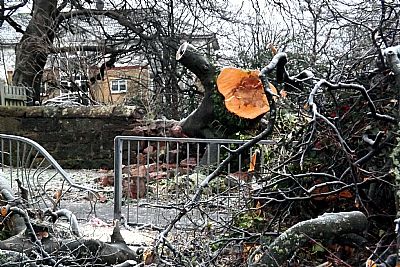
High winds are obviously not restricted to winters, but they can appear more dramatic. Several trees came down in late December 2023. This one was across the access path to the Leven towpath near Bonhill Bridge. In winter the trees appear more fragile, many of their branches dormant. Such damage depends on many factors : age and size of tree, its species (this affects its root form) and the direction of the wind. The Vale, being in a valley can escape the worts of many winds, but sometimes channel it.
ROYAL MUSEUMS GREENWICH : https://www.rmg.co.uk/stories/blog/astronomy/happy-solstice
SALT GRITTING AND SALT BINS IN WEST DUNBARTONSHIRE : https://www.west-dunbarton.gov.uk/gritting
SNOW TYRE ADVICE

